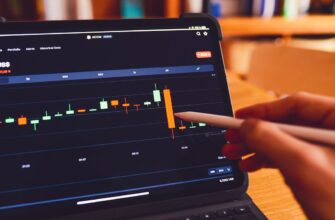- Introduction: Navigating Bitcoin Futures on Bitget
- Why the 1-Hour Timeframe Demands Specialized Risk Management
- Essential Risk Management Tactics for 1-Hour Bitcoin Trading
- Bitget Platform Tools for 1-Hour Risk Control
- Winning 1-Hour Bitcoin Trading Strategies with Risk Mitigation
- Deadly Pitfalls to Avoid in 1-Hour BTC Futures
- FAQ: Bitcoin Futures Risk Management on Bitget
Introduction: Navigating Bitcoin Futures on Bitget
Trading Bitcoin futures on Bitget offers explosive profit potential, but the 1-hour timeframe demands razor-sharp risk management. This high-velocity trading window amplifies both opportunities and dangers, making disciplined strategies non-negotiable. In this guide, you’ll discover actionable techniques to protect your capital while capitalizing on short-term BTC price movements. Whether you’re scalping volatility or swing trading trends, mastering these risk controls separates consistent winners from reckless gamblers.
Why the 1-Hour Timeframe Demands Specialized Risk Management
The 1-hour chart strikes a critical balance for Bitcoin futures traders: It filters out market noise better than 5- or 15-minute charts while providing more timely signals than daily frames. However, this sweet spot introduces unique challenges:
- Accelerated Volatility: BTC can swing 3-5% within an hour during high-impact events
- Liquidity Gaps: Rapid price movements may trigger slippage on stop orders
- Psychological Pressure: Frequent decisions increase emotional trading risks
- Leverage Dangers: Bitget’s high leverage (up to 125x) compounds both gains and losses exponentially
Essential Risk Management Tactics for 1-Hour Bitcoin Trading
Implement these non-negotiable safeguards on Bitget:
- Position Sizing Formula: Never risk >1-2% of capital per trade. Calculate: (Account Balance × Risk %) ÷ Stop-Loss Distance
- Stop-Loss Placement: Set stops below key support/resistance levels with a buffer for volatility. Use Bitget’s “Trailing Stop” feature to lock in profits
- Leverage Discipline: Cap leverage at 10-25x despite Bitget’s higher offerings. Higher leverage = faster margin calls
- Time-Based Exits: Close positions before major news events (e.g., CPI reports, Fed decisions)
- Correlation Checks: Monitor Bitcoin’s relationship with NASDAQ and USD strength using Bitget’s chart overlays
Bitget Platform Tools for 1-Hour Risk Control
Optimize your defense with Bitget’s built-in features:
- Take-Profit/Stop-Loss (TP/SL): Set OCO (One-Cancels-Other) orders to automate exit strategies
- Liquidation Price Alerts: Enable push notifications when positions approach danger zones
- Risk-Reward Calculator: Use the built-in tool to predefine 1:3 reward ratios before entering trades
- Isolated Margin Mode: Contain losses to specific positions instead of entire account equity
Winning 1-Hour Bitcoin Trading Strategies with Risk Mitigation
Combine these approaches with strict risk parameters:
- Breakout Fading: Short false breakouts above hourly resistance with tight stops (1.5% risk). Target 3:1 returns to liquidity pools
- EMA Bounce Plays: Enter longs when price retests the 50-period EMA with RSI >40. Stop-loss 2% below the EMA
- News Volatility Traps: After major announcements, trade reversals from overextended wicks with 1% risk caps
Deadly Pitfalls to Avoid in 1-Hour BTC Futures
- Chasing Pumps/Dumps: Entering after 3%+ moves increases stop vulnerability
- Ignoring Funding Rates: Negative rates on Bitget signal impending short squeezes
- Overtrading: Limit to 3-5 high-conviction setups daily to avoid fatigue-induced errors
- Neglecting BTC Dominance: Sudden shifts in BTC.D impact altcoin correlations
FAQ: Bitcoin Futures Risk Management on Bitget
Q: How much capital do I need for 1-hour Bitcoin futures on Bitget?
A: Minimum $200-$500 recommended. This allows proper position sizing while withstanding volatility. Never trade with essential funds.
Q: What’s the ideal stop-loss percentage for 1-hour trades?
A: 1-2% from entry point typically balances risk and wiggle room. Adjust based on BTC’s average true range (ATR).
Q: Can I automate risk management on Bitget?
A> Yes! Use OCO orders, trailing stops, and price alerts to enforce rules without emotional interference.
Q: How does Bitget’s liquidation mechanism work?
A> Positions auto-close when losses reach your margin level. Isolated mode prevents cross-position liquidation.
Q: Should I trade during all market hours?
A> Avoid low-volume periods (Asian midday, weekends). Focus on London/NYC overlaps for optimal liquidity.








